In 2023, employee happiness dipped to levels not seen in four years. So, it makes sense that in that same year, 51% of employees were watching for or actively seeking new job opportunities.
If your employees are unhappy, they’re probably also struggling with low productivity, a lack of engagement, and reduced morale, all of which directly impact your bottom line.
But how can you make employees happy?
This article shows you the ways in which happy employees can improve your business, and you’ll also get actionable strategies for keeping your workers satisfied in the first place — and ensuring they stick around.
Why it’s worth keeping employees happy
Before looking at specific things you can do to keep smiles on your workers’ faces, it’s important to know why happy employees are so important to a business. Here are the two biggest reasons:
Happy employees are more productive
Unhappy employees who struggle with output can impact your bottom line significantly. In fact, it’s estimated that disengaged team members can cost S&P 500 companies $228 million to $355 million in lost productivity annually.
Disengaged employees are not only less likely to go above and beyond, but they often struggle with performing even the basics well. Moreover, their low morale can spread to the rest of the team — leading even your best-performing team members to a performance dip.
On the other hand, employees who are highly satisfied in their jobs are more likely to produce quality work and positively influence those around them. They’re also typically more creative and bring better ideas to the table, resulting in greater productivity — and higher profits for you.
Happy employees = less turnover
Unsatisfied employees are more likely to leave their jobs, and low retention rates are incredibly expensive. One study suggests that the average new hire costs $4,700, but some employers predict that this amount is actually three to four times the person’s salary. Even an entry-level position costs a lot of money to fill.
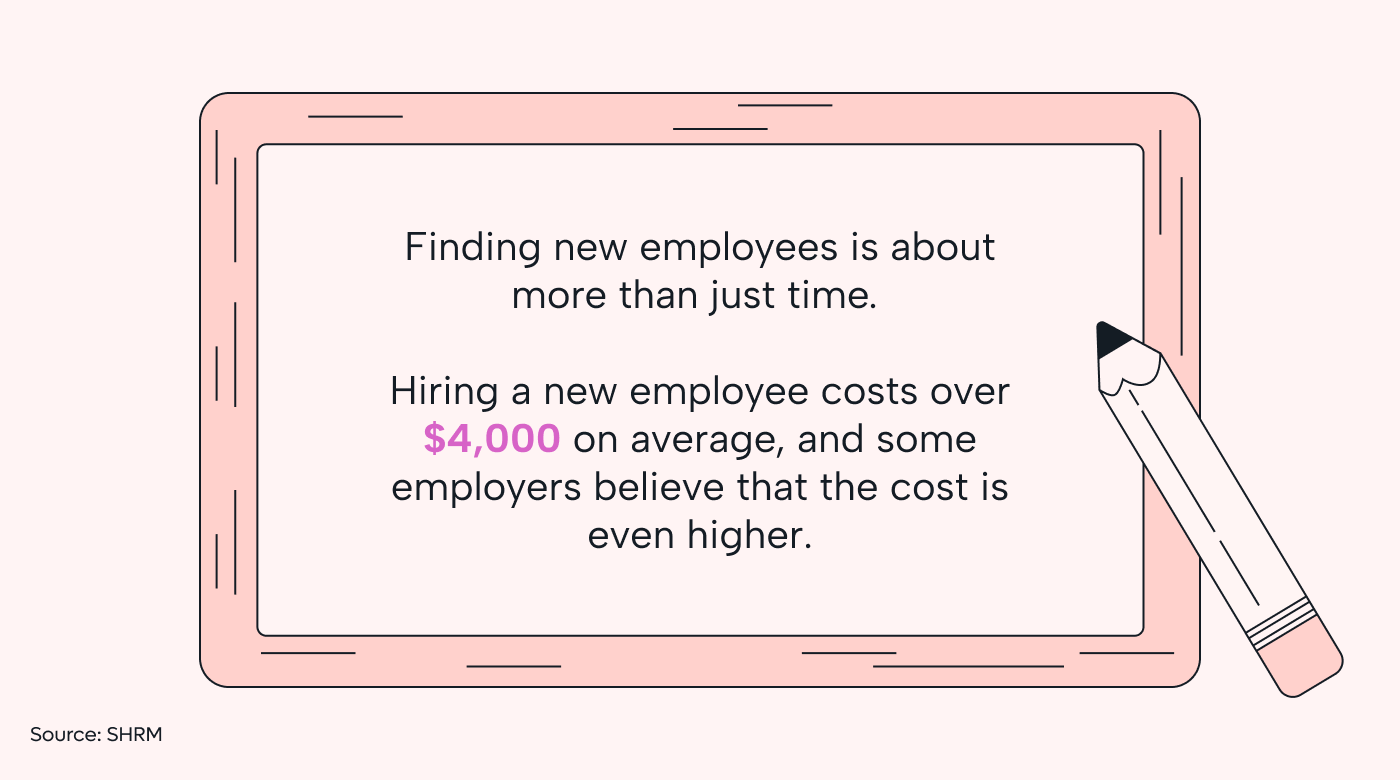
So, if you constantly have to replace employees, hiring costs quickly add up.
Finding and onboarding new team members is also time-consuming. If your company’s HR department doesn’t have to spend as much time assessing applications, interviewing, and training new hires, they can spend more time bettering existing employees’ well-being.
How to make sure that employees are happy
Now that you know the benefits of happy employees, let’s identify some of the top ways you can increase their job satisfaction.
Offer promotion and personal development roadmaps
Many employees quit because they don’t see the potential for upward mobility where they currently are. Here, we also see direct correlations with what truly makes employees happy. For example, 44% of American employees say that they like the opportunities their workplace provides them for professional development and skill improvement.
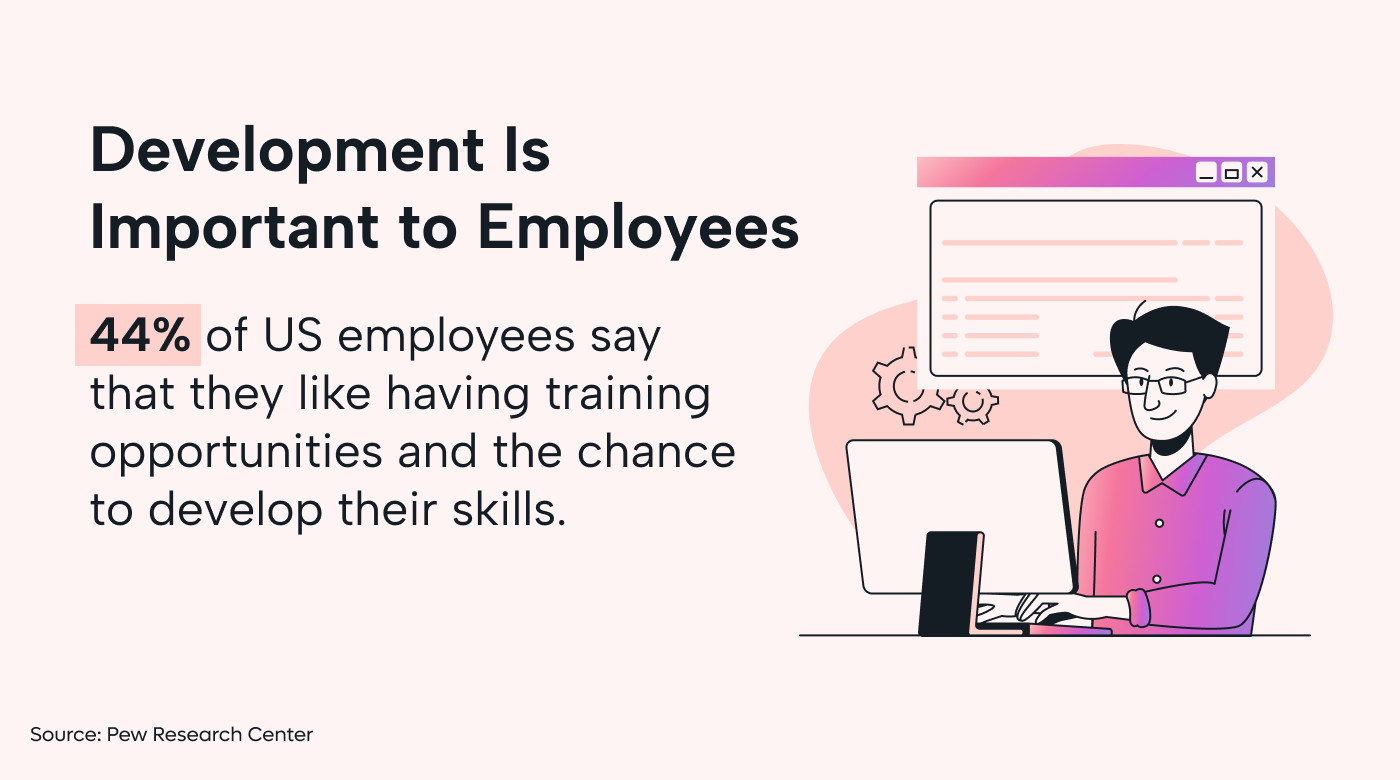
Meanwhile, 33% say that they like the promotion opportunities they have.
But considering that almost the same number are dissatisfied with their chances of moving into higher positions, this does suggest room for improvement in job satisfaction.
Offering roadmaps that show how team members can progress is crucial for employee well-being. Sit down with team members individually to determine what their goals are. Together, you can build actionable steps for growth with clear success markers.
Compensate your employees fairly
Employees who feel fairly compensated are often happier and more productive. In fact, 37% of employees who leave their jobs say that their pay being too low was a major reason, and 26% point to it being a minor reason.
Everyone wants to feel valued. Compensating your staff is partly about respect; if workers feel like you appreciate their efforts, they’ll likely feel more motivated to do great work.
Fairly compensating employees can also boost happiness by reducing external stressors. It’s true that money doesn’t solve all problems, but a comfortable standard of living with good benefits should at least get them out of survival mode. They can then allocate more of their mental energy to their jobs and, as a result, help increase the company’s revenue.
Offer flexible working agreements when suitable
The increased availability of high-speed internet has made out-of-office working more feasible for knowledge workers. Research also shows that hybrid and remote workers score higher in all employee experience measures than in-office employees.
Flexible working agreements aren’t possible for all roles, but employers should offer alternatives to rigid in-office work where it makes sense to do so. Trustworthy and talented employees may perform their tasks at a high level in a place that suits them best, which may not be in a traditional workplace environment.
Setting clear expectations about hybrid and remote work, such as the number of days employees are permitted to work from home per week, should help keep operations running smoothly.
You should also communicate success metrics with employees. Measuring the quality of work and return on investment are both better measures than the number of hours worked or how quickly they respond to your emails.
Use the right software
Since productive employees are generally happy individuals, giving them the best software to do their jobs makes sense.
Automation can make a huge deal here, as 77% of workers say that automating routine tasks would “greatly” enhance their productivity. Employees are also 90% more likely to say that they are more productive after adopting AI than before. Plus, since teams save 3.6 hours per week via automation, it’s unwise to ignore such tools.
Project management tools are a vital part of your business ecosystem. Software of this kind that automates your day and rearranges essential tasks — and reschedules them when necessary — can significantly improve workplace productivity and keep employees satisfied. For example, Motion’s AI assistant can help users become up to 137% more productive.
Other essential business software systems to use include CRM tools, inventory management software, and marketing automation solutions.
Respect your employees’ time
Respecting boundaries is crucial for strong workplace cohesion. While you can contact employees outside of their working hours, don’t expect them to respond until they’re back at work.
Many email and messaging apps have scheduling features. Setting clear communication protocols for each channel can help ensure employees respect each other’s time, as they’ll know when they should and shouldn’t reach out.
If you need to hold meetings, set clear goals and have your discussion points ready in advance. You should also have clear, actionable next steps ready at the end.
During team meetings, give everyone the opportunity to talk. In addition to possible hearing ideas you might not have thought of before, you’ll ensure that everyone feels seen and heard.
The right software can cut the number of unnecessary meetings you hold with your team. For example, Motion users can save up to three meeting hours per week. This reduces distractions and lets them focus on their most essential tasks.
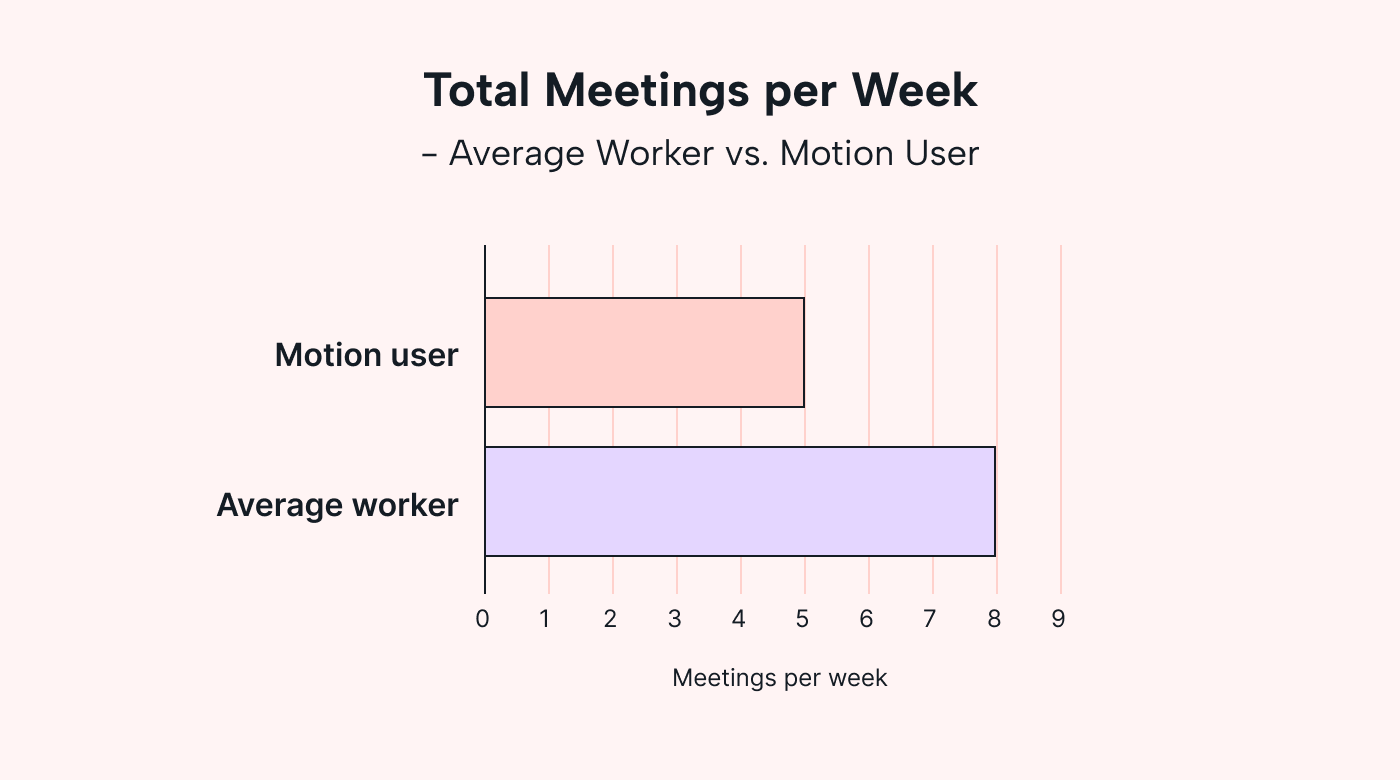
Use positive reinforcement
If you see an employee doing a great job, let them know that their hard work hasn’t gone unnoticed. Knowing their efforts are paying off means they’ll be more likely to continue going above and beyond in their role. This reduces turnover and makes quality output more consistent.
Consider also implementing employee recognition initiatives and getting your team together to celebrate both big and small wins. Both of these go a long way toward building morale and then ensuring that team members continue being productive.
Build a culture of trust
Since 93% of people who say that their manager trusts them also feel energized by their work, building a culture of trust is non-negotiable.
You can build a trusting company culture in several ways, such as sharing regular task progression updates to avoid micromanagement. Project management software is an even better way to do this, as it provides a full overview of what everyone is working on.
Moreover, having a culture of trust means you’ll only need to check in with employees when necessary. Intentionally taking a step back is one of the best leadership strategies to try, and you’ll likely find that your team gets their work done more effectively when left to their own devices.
Give a clear sense of direction
Offering employees a clear sense of direction can give them a purpose and allow them to work toward a common objective, increasing their overall happiness as a result. And this starts from the top. The company should know exactly which problems they’re trying to solve and why.
Identifying the positive impacts of success beyond the money aspect is also a good idea.
Make sure processes are clear and that each team member knows where they stand in the overall company blueprint to help provide that sense of direction.
Ask for regular feedback
You’d ask for feedback from your customers to improve their experiences, so it makes sense to do the same with your employees.
Every three to six months, send out survey forms via email. Ask team members to rate different areas (e.g., how satisfied they feel about management) and include a text box for customized feedback.
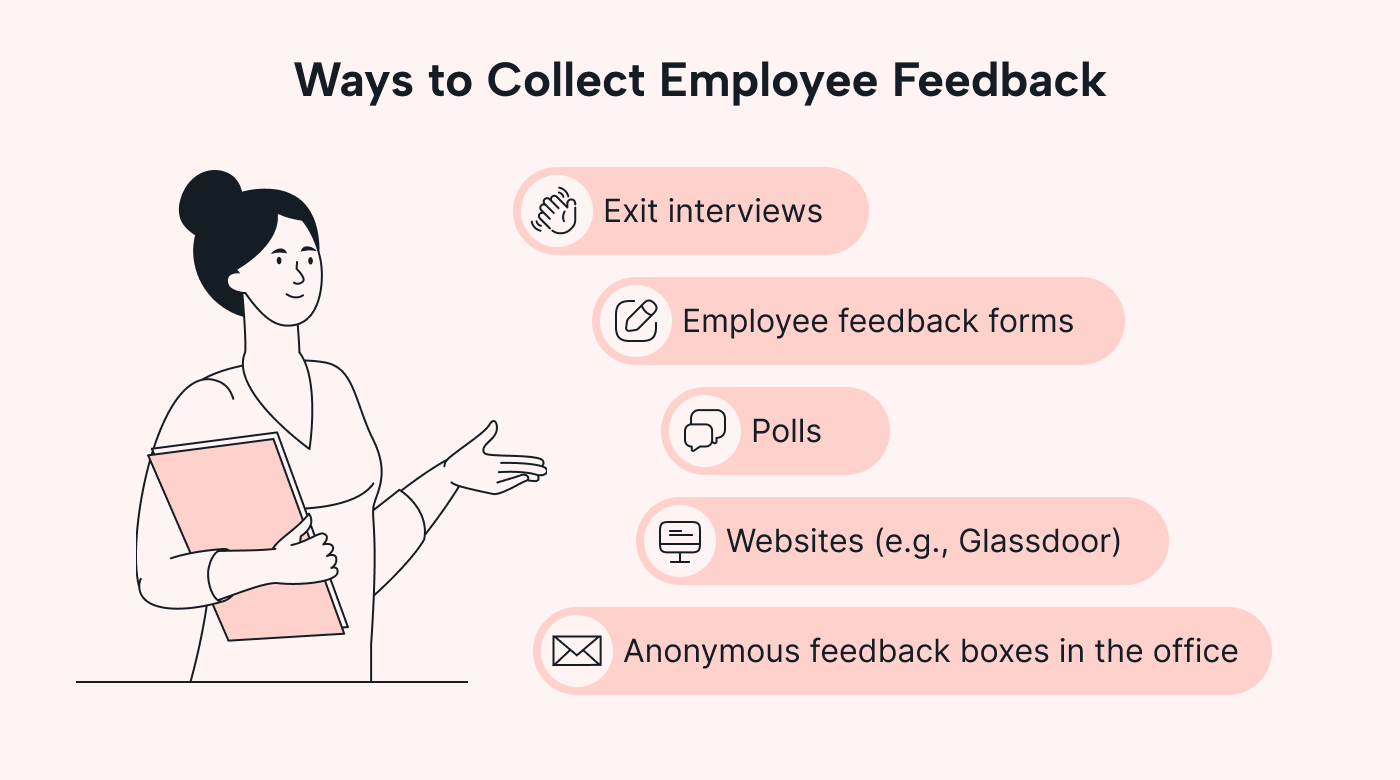
Employee departures are never ideal, but they can provide an opportunity for growth. During each exit interview you hold, ask the departing team member what they would improve about your company.
What makes employees unhappy? 4 things to avoid
Avoid the following to keep your employees happy and around for the long haul:
1. Micromanagement
Micromanagement is one of the biggest morale destroyers. In fact, 73% of people say that this action is a red flag, and 46% would see it as a reason to quit their job.
From a happiness perspective, micromanagement highlights a lack of manager trust, which damages employee morale and self-esteem.
Micromanagement also makes no sense on a practical level. Additional red tape can cause unnecessary distractions and roadblocks, stopping team members from completing their work to a high level.
2. Too many meetings
Knowledge workers think that meetings are ineffective 72% of the time, and over half have had to work overtime because of meetings. So, assess your current strategy and determine what’s necessary. Sometimes, you can send an email instead of having a meeting.
Not all meetings are bad, but you do need to understand when your team needs time for deep work. Using project management software that provides more clarity on what you should work on is just one way to ensure that the only meetings you schedule are ones that’ll move the needle forward.
3. A lack of direction and communication
Direction is a huge deal for employees. Forty-one percent would change the level of engagement or culture at their company, including having clearer goals and stronger guidance. Not knowing what the company they work for is trying to achieve can result in your best employees getting frustrated.
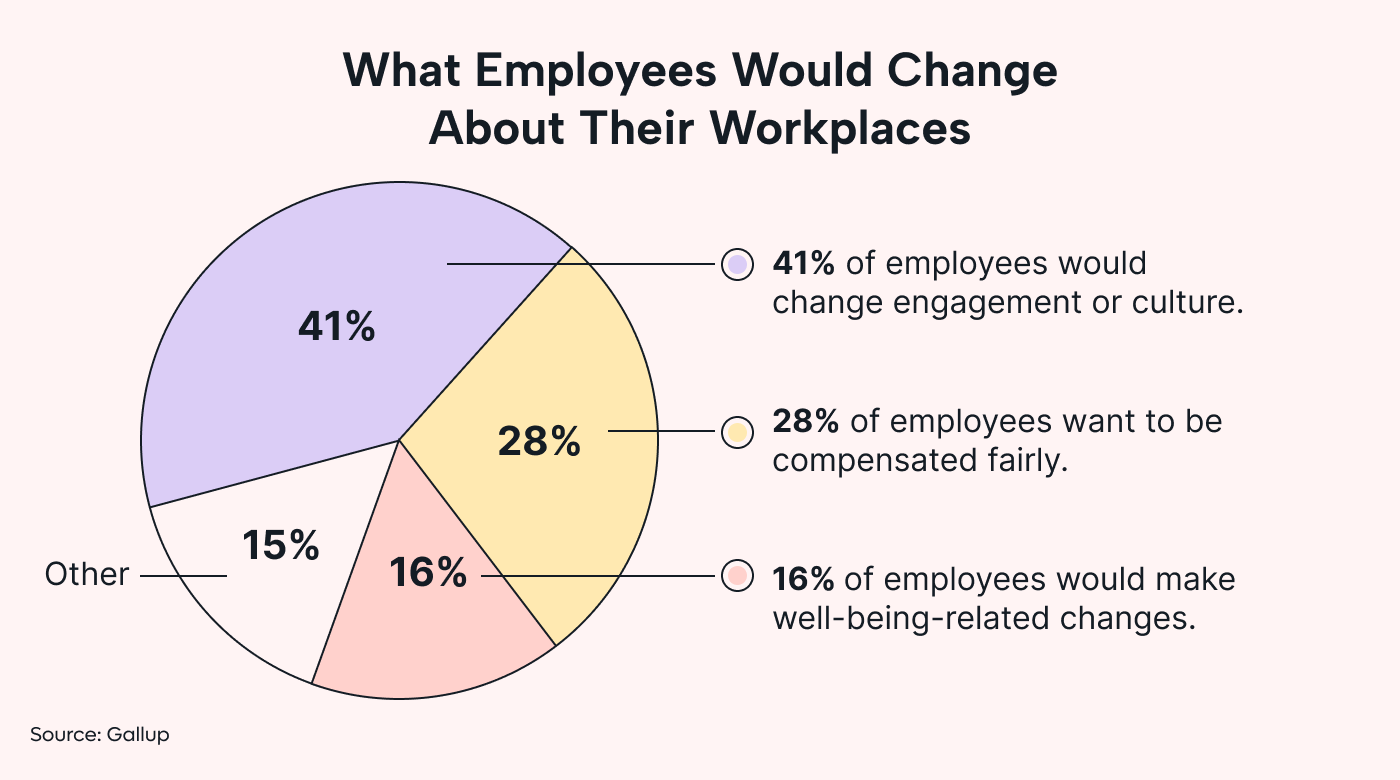
As part of those employee engagement and culture changes, team members would also like their managers to be more approachable. If they don’t get this, they can quickly become disengaged.
4. Not feeling respected
Like all other human beings, employees want (and deserve) respect. Unsurprisingly, 56% of those who leave their jobs cite disrespect as a reason for doing so.
Disrespect can take several forms, such as being ignored, belittled, or insulted. Top-performing employees will likely move to a place where they’re treated better. Even if team members stay, it’s possible that they’ll perform nowhere near their capabilities — meaning that everyone loses.
Enhance your employee satisfaction with the help of Motion
Happy employees depend on respect, trust, and technology. Having a clear sense of direction provides clarity and gives them a sense of purpose, and giving them regular feedback helps you continuously improve your work environment.
A strong software infrastructure can limit the number of unnecessary meetings you hold and help employees avoid feeling overwhelmed. This is where Motion can help. Sign up for a 7-day free trial today.

Danny is a project management expert with decades of experience in writing for online audiences. He has worked both in-house and as a freelancer for several major B2B SaaS companies and tech publications. Besides writing, Danny always keen to flex his creative muscles; he has his own travel blog and also enjoys photography.




